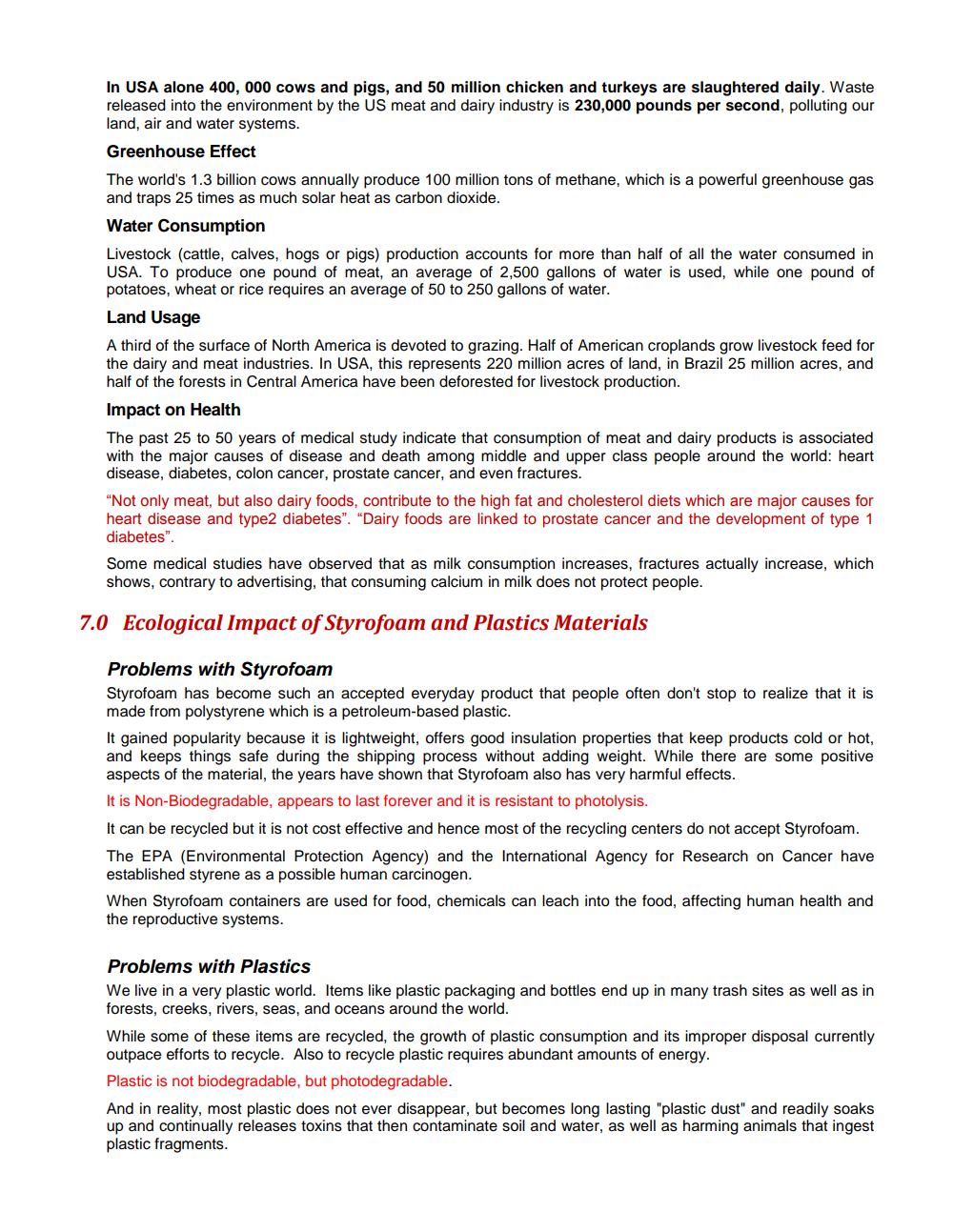Book Title: Contemporary Jain Way of Compassionate Living V1 Author(s): Pravin K Shah Publisher: JAINA Education Committee View full book textPage 5
________________ In USA alone 400, 000 cows and pigs, and 50 million chicken and turkeys are slaughtered daily. Waste released into the environment by the US meat and dairy industry is 230,000 pounds per second, polluting our land, air and water systems. Greenhouse Effect The world's 1.3 billion cows annually produce 100 million tons of methane, which is a powerful greenhouse gas and traps 25 times as much solar heat as carbon dioxide. Water Consumption Livestock (cattle, calves, hogs or pigs) production accounts for more than half of all the water consumed in USA. To produce one pound of meat, an average of 2,500 gallons of water is used, while one pound of potatoes, wheat or rice requires an average of 50 to 250 gallons of water. Land Usage A third of the surface of North America is devoted to grazing. Half of American croplands grow livestock feed for the dairy and meat industries. In USA, this represents 220 million acres of land, in Brazil 25 million acres, and half of the forests in Central America have been deforested for livestock production. Impact on Health The past 25 to 50 years of medical study indicate that consumption of meat and dairy products is associated with the major causes of disease and death among middle and upper class people around the world: heart disease, diabetes, colon cancer, prostate cancer, and even fractures. "Not only meat, but also dairy foods, contribute to the high fat and cholesterol diets which are major causes for heart disease and type2 diabetes". "Dairy foods are linked to prostate cancer and the development of type 1 diabetes". Some medical studies have observed that as milk consumption increases, fractures actually increase, which shows, contrary to advertising, that consuming calcium in milk does not protect people. 7.0 Ecological Impact of Styrofoam and Plastics Materials Problems with Styrofoam Styrofoam has become such an accepted everyday product that people often don't stop to realize that it is made from polystyrene which is a petroleum-based plastic. It gained popularity because it is lightweight, offers good insulation properties that keep products cold or hot, and keeps things safe during the shipping process without adding weight. While there are some positive aspects of the material, the years have shown that Styrofoam also has very harmful effects. It is Non-Biodegradable, appears to last forever and it is resistant to photolysis. It can be recycled but it is not cost effective and hence most of the recycling centers do not accept Styrofoam. The EPA (Environmental Protection Agency) and the International Agency for Research on Cancer have established styrene as a possible human carcinogen. When Styrofoam containers are used for food, chemicals can leach into the food, affecting human health and the reproductive systems. Problems with Plastics We live in a very plastic world. Items like plastic packaging and bottles end up in many trash sites as well as in forests, creeks, rivers, seas, and oceans around the world. While some of these items are recycled, the growth of plastic consumption and its improper disposal currently outpace efforts to recycle. Also to recycle plastic requires abundant amounts of energy. Plastic is not biodegradable, but photodegradable. And in reality, most plastic does not ever disappear, but becomes long lasting "plastic dust" and readily soaks up and continually releases toxins that then contaminate soil and water, as well as harming animals that ingest plastic fragments.Page Navigation
1 ... 3 4 5 6
